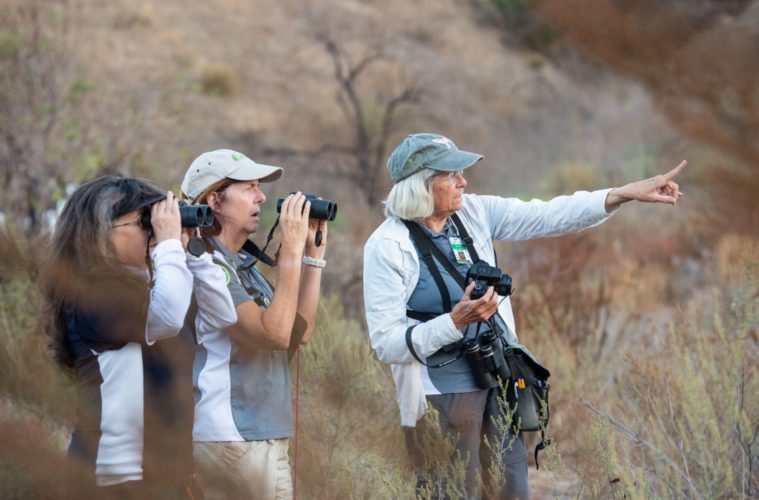After losing more than an acre of land within its 14-acre Native Seed Farm to the Silverado Fire in 2020, the Irvine Ranch Conservancy is once again seeking volunteers for assistance in habitat restoration. The IRC’s Native Seed Farm is a key resource locally, as it provides seeds for the restoration of native plant species across Orange County.
The Silverado Fire of 2020 caused significant damage to habitats and portions of infrastructure within the IRC, which reopened to the public in October. Fire damage was especially significant to the Native Seed Farm’s irrigation system and the area’s perennial native plants which are utilized in seed harvesting.
For the last two years, IRC staff has worked to bring the Native Seed Farm to health, replacing damaged infrastructure and replanting native species for future wildlife restoration projects. However, there is still more work to be done, including the completion of a 3,500 foot irrigation system that includes an intricate system of pipelines and sprinklers that will be constructed with fire resilient material.
Heading into 2023, specially trained volunteers can help support the IRC’s restoration efforts in a variety of ways. Currently, the Native Seed Farm in Irvine is hosting weekend activities. With activities ranked by difficulty, volunteers can choose their preferred type of environment from working on flat stable ground to more expert level work including off-trail and canyon-based remote activities.
In addition to the Native Seed Farm volunteers, can participate in other restoration projects like bird watching. IRC’s “community science” bird monitoring efforts within OC Parks’ Limestone Canyon Nature Preserve, Agua Chinon Canyon and Weir Canyon are making a difference in the preservation of Orange County’s urban wild lands. IRC works with trained volunteers to go between six routes within the canyon sites to survey bird populations several times a year.
Robert Freese, Restoration Ecologist and Program Manager for Irvine Ranch Conservancy explained that bird watching is a great way to gauge the impact natural disasters have on local wildlife populations.
“Our volunteers are very accomplished birders involved with the Audubon Society,” Freese said. “The data they collect help us understand migratory bird populations, and how they are impacted by natural disasters like wildfire.”
While birds typically migrate during the spring and fall — between April and June, and again between September and October — experts take an additional count of “overwintering birds” in January.
“It’s hard to truly see patterns unless you take a long-term perspective. Trends may not materialize for a decade or more, but this work creates a baseline for future surveys,” said Freese. “As we do this on an ongoing basis, the longer these surveys are conducted, the more valuable our data sets are. They help us conceptualize the impact of our efforts to rehabilitate our lands and improve habitat for wildlife. The contribution of our volunteers is so important to this effort and will have a tremendous impact on the land for years to come.”
For more information about volunteer opportunities at the IRC visit www.letsgooutside.org.
Advertising disclosure: We may receive compensation for some of the links in our stories. Thank you for supporting Irvine Weekly and our advertisers.

